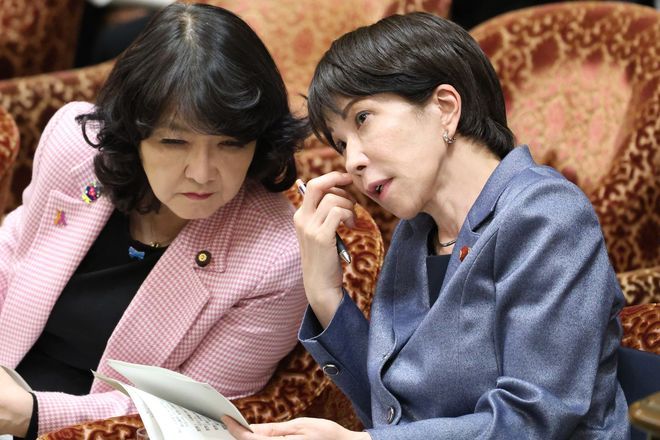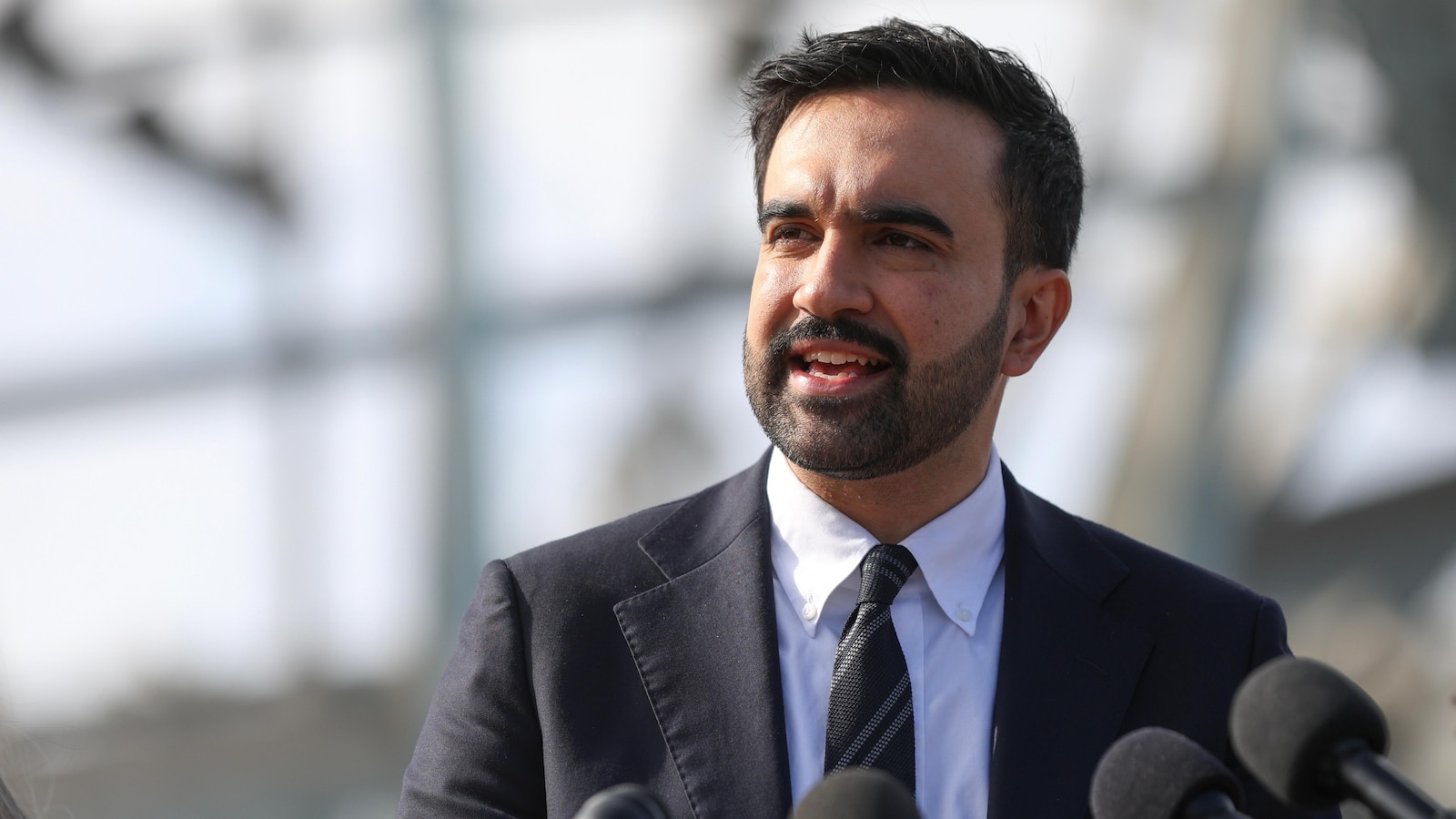Microsoft has announced the general availability of SharePoint Framework (SPFx) version 1.22, a release centred on modernising the build and tooling experience for SPFx developers. This shift marks a foundational update to how SPFx…
Blog
-

The Indicator from Planet Money : NPR
Seasons greetings from the The Indicator! On today’s show, the story of a man who started buying and selling stocks as a hobby — and got seriously addicted….
Continue Reading
-

EDITORIAL: Takaichi’s initial budget ignores sense of crisis in public finances
Prime Minister Sanae Takaichi’s administration has approved the initial budget proposal for next fiscal year, which includes a record 122.3 trillion yen ($782 billion) in general-account expenditures.
The…
Continue Reading
-

Air passengers warned of higher fares as regional airports face bigger tax bills | Airline industry
Air passengers are being warned to brace for ticket rises as regional airports across the UK face “unprecedented” rises in property tax next year.
Analysis of government data for the Press Association has revealed regional airports are among those facing the steepest increases in business rates of any sector in the UK amid an overhaul of property valuations underpinning the tax.
While London’s Heathrow and Gatwick are also being hit with huge increases in their business rates bills, the figures show that the most extreme cases are focused outside London, with regional airports poised to suffer.
Global tax firm Ryan’s calculation of Valuation Office Agency data found that the rateable values have jumped more than six-fold in some cases in the latest property revaluation, sending tax bills soaring higher.
Even with transitional relief, which limits increases to 30% next year, regional airports will still endure some of the largest cash increases in the country.
And most airports face their bills more than doubling over the next three years.
Manchester airport is among the worst affected, with its business rates bill likely to increase by £4.2m to £18.1m next year, according to Ryan’s data.
Bristol airport will receive a £1.2m increase to £5.2m, while Birmingham International airport faces a £1.8m rise to £7.6m.
Newcastle International airport is in line for a £244,755 rise to £1.1m.
Alex Probyn, the practice leader for Europe and Asia-Pacific property tax at Ryan, told PA: “With an unprecedented 295% sector-wide uplift, regional airports simply cannot absorb a cost shock of this magnitude.
“These increases will inevitably flow through the system: first into airport charges, then into airline costs, and ultimately into ticket prices.”
Airport operators have said the tax blow may also hold back investment in the sector.
A Manchester Airports Group spokesperson said: “Airports were already some of the highest rates-payers in the country and were prepared to pay significantly more.
“But increases of more than 100% mean we have to look again at our plans to invest more than £2bn in our airports across the UK over the next five years.
“It is inevitable air travel will become more expensive as the industry absorbs these costs. That impacts hard-working people throughout the country and makes global trade harder for businesses.”
AirportsUK – the trade group representing the sector – is working on a response to the Treasury’s consultation on the business rates plan, which closes in February.
It said the plans are “shortsighted” and will “have a knock-on effect for the businesses that depend on airport connectivity in all areas of England”.
This risks “negatively impacting local economies that depend on the supply chains, tourists and connections their airports provide”, according to the group.
“That is why the long-term review into how airport business rates are calculated, also announced by government, is so important and we will engage with Treasury to ensure this delivers the positive outcome airports need to drive investment and economic growth.”
Other regional airports heading for large bill increases include Liverpool airport with a £233,100 rise to £1m, East Midlands International airport with a £437,895 increase to £1.9m, and Bournemouth airport with a £102,398 increase to £443,723.
Continue Reading
-

Collaborative Musculoskeletal Care: Chiropractors
This abbreviated commentary is reprinted without references from the Cleveland Clinic Journal of Medicine (September 2025, 92[9] 550-554; doi: 10.3949/ccjm.92a.25014). The open-access and fully referenced original article is available at ccjm.org/content/92/9/550.
Advertisement
Cleveland Clinic is a non-profit academic medical center. Advertising on our site helps support our mission. We do not endorse non-Cleveland Clinic products or services. Policy
By Samuel M. Schut, DC
For patients with acute or chronic musculoskeletal conditions, guidelines recommend a variety of noninvasive pharmacologic and nonpharmacologic treatments as first-line management. However, many patients receive suboptimal care, including unneeded imaging, too many prescriptions for opioids, not enough evidence-based advice, and premature referrals for interventional or surgical procedures, without first exhausting conservative measures.
These practices are associated with worse financial and clinical outcomes, including higher total healthcare costs and greater risk of developing chronic, disabling pain. Notably, many of the recommended frontline treatments outlined in clinical practice guidelines align with approaches central to the chiropractic profession. And some US healthcare systems now include chiropractors on interdisciplinary pain management teams.
Integrating chiropractors into multidisciplinary care settings can help support high-value, guideline-concordant musculoskeletal care and may free up internists to see more patients with other problems. Here, we outline for internists and other medical specialists the following aspects of chiropractic care.
Extensive training
Doctors of chiropractic (DCs) are licensed healthcare professionals trained to operate as point-of-contact practitioners for musculoskeletal complaints. To become licensed, DCs must successfully complete a 3- to 4-year accredited doctoral degree program and obtain satisfactory scores on a four-part examination administered by the National Board of Chiropractic Examiners. These examinations involve both computer-based and structured practicums and assess knowledge in the areas of basic and clinical science, diagnostic imaging, and case management.
Matriculates into doctoral programs must hold a bachelor’s degree or have obtained a cumulative grade-point average of 3.0 (2.75 in select circumstances) or higher on a 4.0 scale for 90 semester credits at an accredited institution before admission. Didactic and clinical training consists of a minimum of 4,200 hours of basic and clinical science instruction correlated with analytical and practical skill development. A minimum of 1,000 contact hours is spent in a patient-care setting.
After completing the doctoral program, some DCs pursue advanced postgraduate training in integrated residency or fellowship programs. Such training is optional and not currently required for licensure in any state. Requirements to obtain and maintain active licensure are set forth by each state individually. States stipulate regular continuing education in topics such as documentation, ethics, law, and clinical practice to retain a license to practice.
What do chiropractors do?
Chiropractic is a healthcare profession and not a singular treatment approach. Chiropractors possess diagnostic autonomy and use nonpharmacologic, noninvasive therapies to treat musculoskeletal disorders and improve quality of life using an integrative, whole-person approach. The chiropractic profession is not categorically opposed to pharmacologic or invasive therapies; rather, chiropractors simply do not provide these types of treatment, and patients should not expect to receive them from chiropractors.
An initial trial of chiropractic care typically includes a cluster of treatment sessions within a short time (eg, 4–6 visits over 1–2 months), followed by a reevaluation to assess treatment effectiveness and determine the need for continued or escalated care.
For chronic or more complex conditions, patients may benefit from supportive treatment beyond the initial trial of care. However, empowering patients to self-manage symptoms and minimize practitioner dependency remains a top priority.
Evidence-based care
Spinal manipulative therapy as an isolated intervention has been shown to be as effective as other guideline-recommended treatments and more effective than non-recommended treatments in terms of relieving pain and improving function and quality of life in patients with acute and chronic back pain. Additionally, spinal manipulative therapy may allow patients to minimize their reliance on pain medications, with their attendant risks.
While the degree of benefit varies, the combination of spinal manipulative therapy and other goal-oriented interventions such as rehabilitative exercise or neuromuscular reeducation is a well-rounded and patient-centered approach as recommended by clinical practice guidelines.
When considering the evidence supporting chiropractic care, it is most pragmatic to evaluate the benefits of multimodal integrative care rather than the efficacy of isolated interventions and single outcomes. Clinical practice guidelines recommend treatments such as joint manipulation and mobilization, myofascial therapies, and exercise as part of a multimodal care plan for managing back and neck pain — all of which are central to the chiropractic scope of practice.
Chiropractic care is also cost-effective. In a recent retrospective analysis, patients who started care with a chiropractor for acute low back pain incurred total medical costs that were $8,848 lower than those who started care with primary care clinicians and $12,267 lower than those who started care in the emergency department.
Practical considerations
Who should — or should not — see a chiropractor? Conditions commonly managed by chiropractors include mechanical low back and neck pain, with or without associated extremity symptoms, cervicogenic and tension-type headaches, and musculoskeletal extremity complaints such as knee osteoarthritis, rotator cuff tendinopathy, and carpal tunnel syndrome.
Contraindications to certain chiropractic treatments can be broadly categorized as absolute or relative, depending on the resultant impact on treatment decisions. Absolute contraindications to spinal manipulative therapy include but are not limited to acute fractures or dynamic spinal instability, severe or progressive neurologic deficits related to the area of concern, and pain caused by cancer or infection; relative contraindications include diseases that cause bone softening, prior spinal surgery, bleeding disorders, and inflammatory diseases in the nonactive phase.
The best available evidence suggests that if patients obtain pain relief from chiropractic therapy, they get it quickly, whereas factors that predict lack of relief include poor psychological status (eg, depression, anxiety, kinesiophobia), adverse sleep and fatigue patterns, chronic pain, and high baseline pain intensity.
In most instances, it is not necessary to obtain imaging, laboratory work, or other specialty testing before referring patients for chiropractic care unless there is suspicion for sinister disease or treatment contraindications.
Chiropractors vs. physical therapists
Internists and other medical specialists are likely familiar with indications for physical therapy and, at this point, may observe substantial overlap between it and chiropractic. So, what differentiates chiropractors from physical therapists? While there are similarities between the two professions, including training in rehabilitative and manual therapies, chiropractors receive approximately twice as much academic and clinical training, and this is reflected by their broader scope of practice.
Since DCs can establish a diagnosis and order or perform imaging or other diagnostic studies (eg, electrodiagnostics, musculoskeletal ultrasonography, laboratory studies), this authority eliminates the need for the referring physician or the patient’s primary care clinician to coordinate clinical decisions on the chiropractor’s behalf, leaving chiropractors to independently evaluate, diagnose, and manage patient care.
A practical solution
Integrating chiropractors into multidisciplinary healthcare teams offers a practical solution to the challenges faced by internists when managing painful musculoskeletal conditions. Their specialized training, evidence-based approaches and ability to act as point-of-contact case managers offer a unique solution to provide guideline-concordant, cost-effective care without excessive administrative demands. By collaborating more with chiropractors, healthcare systems can improve patient outcomes, reduce costs, and alleviate burdens on primary care clinicians.
Continue Reading
-

Lawyers assault YouTuber Rajab Butt following appearance at Karachi court
YouTube Rajab Butt pictured during his appearance at additional district and sessions court central, in Karachi on December 29, 2025. — Geo News - Rajab Butt faces…
Continue Reading
-

Samsung Expands Its Audio Ecosystem for 2026 With Smarter Multi-Device Sound and Immersive New Designs – Samsung Newsroom Malaysia
Enhanced Q-Series soundbars and all-new Music Studio speakers deliver fuller, clearer and more expressive sound, powered by enhanced Q-Symphony
Samsung Electronics Co., Ltd., the global leader…
Continue Reading
-

Imad Wasim’s Ex-Wife Opens Up About Her Divorce
Former Pakistan cricketer Imad Wasim’s ex-wife, Sania Ashfaq, has broken her silence regarding their divorce, providing her side of the story after Imad announced their separation.
Sania took to Instagram to reveal that their marriage ended…
Continue Reading
-

Zohran Mamdani has bold promises. Can he make them come true as New York City mayor?
Zohran Mamdani has promised to transform New York City government when he becomes mayor. Can he do it?
Mamdani, a 34-year-old democratic socialist, already faces intense scrutiny, even before taking office in one of the country’s most scrutinized…
Continue Reading
